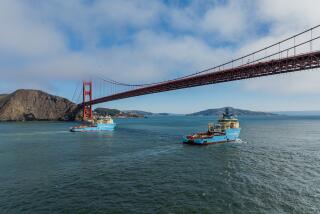3-Year Cleanup of Alaska Oil Spill Is Ended
- Share via
ANCHORAGE — The three-year cleanup of the nation’s worst oil spill, which at its height involved up to 11,000 people, ended Friday even though oil is still on the beaches of Alaska’s Prince William Sound.
Federal and state officials agreed that no more effective cleanup work can be done to repair beaches damaged by the 11-million-gallon-spill, which occurred on March 24, 1989, after the Exxon Valdez supertanker struck a reef in the sound.
“I have determined that further shoreline treatment would provide no net benefit to the environment,” said Coast Guard Rear Adm. David Ciancaglini, the coordinator of cleanup efforts. “Therefore, the cleanup phase of the response is concluded.”
“It is now time to move on. We must work together to implement responsible restoration projects to speed the recovery which is under way,” said John Sandor, commissioner of the Alaska Department of Environmental Conservation.
Officials admitted that oil remains on many beaches.
“Does this mean all the oil’s gone? The answer is no,” said Coast Guard Cmdr. Dennis Maguire, who was second-in-command of the cleanup effort.
Of particular concern, state and federal officials said, are the layers of oil trapped under up to 200 mussel beds that are used as food sources by birds and otters.
Further work to repair the environment will come from restoration projects funded by Exxon’s $1.025-billion legal settlement for spill damages, officials said.
Exxon has spent about $2.5 billion to clean up the spill, which polluted more than 1,200 miles of shoreline, officials said.
Since 1989, cleanup teams on the beaches have diminished significantly. This summer, about 30 state, federal and Exxon workers surveyed 82 sites and retrieved oil from most of them, Coast Guard officials said.
Exxon has paid $50 million in criminal restitution to the federal government, $50 million in criminal restitution to the state government and has promised to pay $900 million over the next 10 years into an environmental restoration fund.
More to Read
Sign up for Essential California
The most important California stories and recommendations in your inbox every morning.
You may occasionally receive promotional content from the Los Angeles Times.











